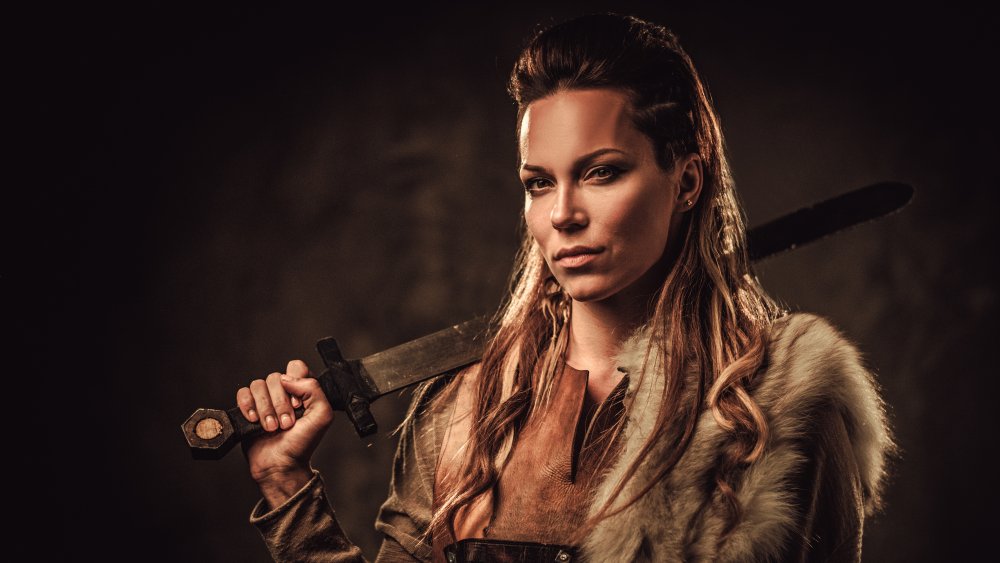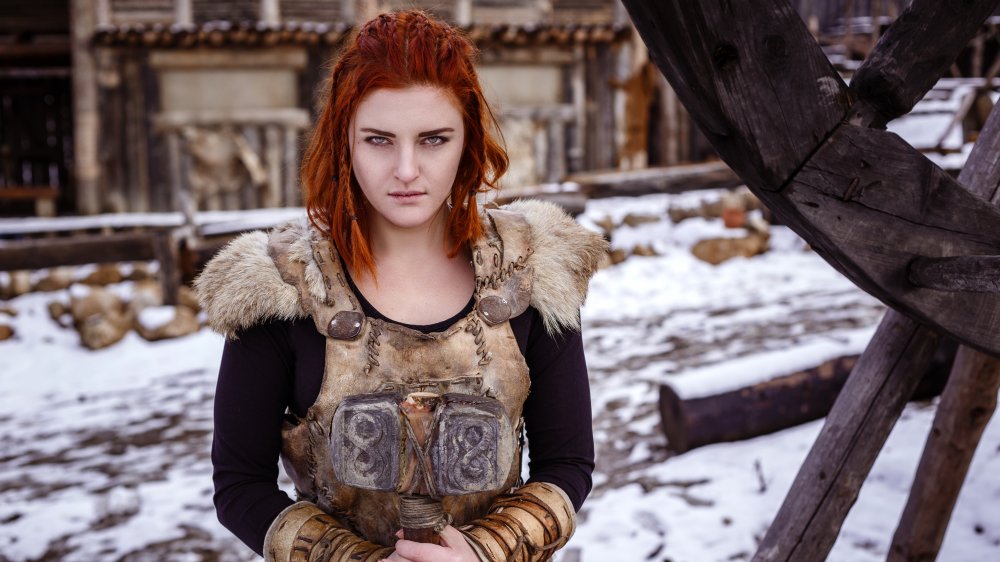What Life Was Like For Viking Women
Vikings. The word alone conjures a host of images in popular imagination: brutal, burly savages wielding axes and howling their way through coastal raids, clad in equal parts dirt and animal skins, and sporting questionable hygiene. The Vikings of ages past have left a permanent, Odin-worshiping mark on history and pop culture (such as the History Channel's dubiously accurate Vikings, about famed warrior Ragnar Lothbrok), which in turn has forged a mythical cocktail of half-truths about their society.
The Vikings composed a far more nuanced society than many realize. Even though they originated in Scandinavia in the late 8th century, as explained in History, they were not composed of a single ethnic group, nation, or even religion (although Norse mythology stands prominently among their traditions). As described by the BBC, they traveled west through modern day Iceland, Greenland, out to Newfoundland, and southeast all the way to Constantinople and central Asia. The term viking is, in fact, a verb, used to described a vocation within an entire society, one that involved seafaring expeditions, exploration, trade, and settlement, per Life in Norway. Warfare was as much a part of Viking society as any other, but the richness of their customs spanned far beyond stories of bloodthirsty attacks, largely written after the fact.
It might be easy to imagine that women had a reduced, diminished role in this society, but while it's accurate to say that Viking culture was male-dominated, women held an honored role in society as caregivers, artisans, tradespeople, and landowners.
Partners in commerce, manufacturing, and marriage
Even though Viking women were subjected to arranged marriages, their role was not passive. As History states, women were in charge of family finances, and had an active role in managing their household. They had control over their marriages and their suitors, and if unhappy with their home life, could call a witness to her house and essentially divorce their husbands on the spot. If a husband died, the family wealth passed to the wife. So, it wasn't uncommon for women to be buried with rings of estate keys, which indicated that they had control over land and property. Women were also responsible for textile production in Viking society, which, as the Danish site Natmus describes, likely led to female entrepreneurship in Viking society (especially while men were away on expeditions, and women had to hold down settlements).
There are numerous tales of female warriors in Viking society, per the Ancient History Encyclopedia. The role of these shield maidens is mirrored in Valkyries — spirits that roam battlefields to escort the fallen to Valhalla — and prominent figures such as the goddesses Skadi, goddess of hunting, the explorer Gudrid Thorbjarnardóttir, and Unn the Deep-Minded, settler of Iceland and commander of her own fleet.
In the end, women had more latitude in Viking culture than many other cultures of the time. It's easy to see how the roots of this progressive attitude have led to the egalitarianism of contemporary Scandinavia.

